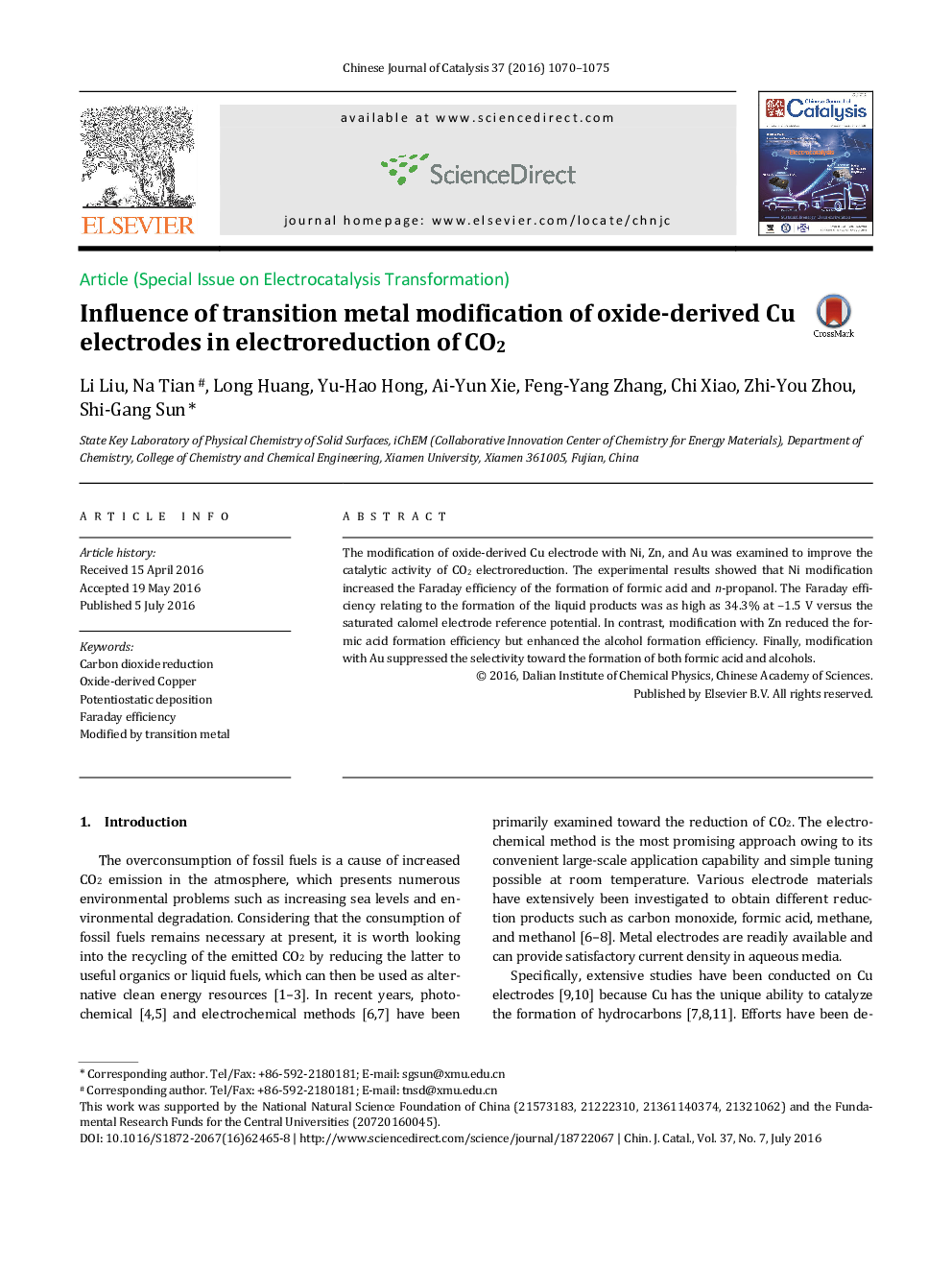| کد مقاله | کد نشریه | سال انتشار | مقاله انگلیسی | نسخه تمام متن |
|---|---|---|---|---|
| 59349 | 1419417 | 2016 | 6 صفحه PDF | دانلود رایگان |

The modification of oxide-derived Cu electrode with Ni, Zn, and Au was examined to improve the catalytic activity of CO2 electroreduction. The experimental results showed that Ni modification increased the Faraday efficiency of the formation of formic acid and n-propanol. The Faraday efficiency relating to the formation of the liquid products was as high as 34.3% at −1.5 V versus the saturated calomel electrode reference potential. In contrast, modification with Zn reduced the formic acid formation efficiency but enhanced the alcohol formation efficiency. Finally, modification with Au suppressed the selectivity toward the formation of both formic acid and alcohols.
Graphical AbstractOxide-derived Cu electrode was modified with Ni, Zn, or Au, and the Ni-modified electrode showed the highest Faraday efficiency toward formation of formic acid: at −1.5 V (SCE), the Faraday Efficiency of liquid products is 34.3%; besides, the Zn-modified electrode slightly facilitated the formation of alcohols.Figure optionsDownload as PowerPoint slide
Journal: Chinese Journal of Catalysis - Volume 37, Issue 7, July 2016, Pages 1070–1075